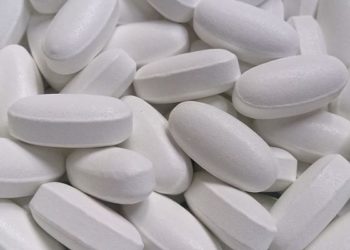Overall US diet quality improved from 1999 to 2010
1. From 1999 to 2010, there was an overall increase in the healthfulness of American diets, due in large part to a decrease in trans-fats, but also due to increased fruit, vegetable and polyunsaturated fatty acid (PUFA) intake.
2. Dietary quality scores of those in higher socioeconomic status (SES) groups were consistently higher than lower socioeconomic groups. Through the study period, this gap of dietary quality widened.
Evidence Rating Level: 2 (Good)
Study Rundown: An unhealthy diet entails increased risk for non-communicable diseases such as cardiovascular disease and diabetes. It is thought that that unhealthful diet is among the top contributors to morbidity in the United States. Thus, promotion of healthful diets has long-term implications for potentially preventing adverse health outcomes. Moreover, evaluating dietary trends can influence future public health policies and determine need for further intervention. A previous study found that from 1965 to 1991, there was significant improvement in US dietary quality. This study sought to investigate dietary quality trends from 1990 to 2010.
The investigators discovered that during the studied time period, there was an overall improvement in the healthfulness of American diets, largely due to decrease in trans-fat intake. However, they also found that the gap in dietary quality widened between higher and lower socioeconomic status (SES) groups. Strengths of the study include that it is a large-scale, national study of Americans of varying ages, using a validated dietary quality composite score to characterize outcomes. Limitations include change of outcome analysis methodology during the study, potential of recall bias in the 24-hour diet recall survey, and inability to analyze data longitudinally due to the study’s cross-sectional nature.
Click to read the study, published today in JAMA Internal Medicine
Click to read an accompanying editorial from JAMA Internal Medicine
Relevant Reading: The State of US Health, 1990-2010: Burden of Diseases, Injuries, and Risk Factors
In-Depth [cross-sectional study]: The study investigated the trends of American dietary quality from 1999 to 2010 through use of data from the National Health and Nutrition Examination Survey. The analysis included 29,124 adults aged 20 to 85 years old. Dietary data assessment included a 24-hour dietary recall survey. Demographic information, including socioeconomic status, race, education, and body mass index (BMI) were collected as well. The Alternate Healthy Index 2010 scores (AHEI-2010) were calculated, with higher scores indicating higher quality of diet. For trans-fat, sugar-sweetened beverages and fruit juices, red or processed meats, a higher component score reflected lower intake.
When adjusted for energy intake, the mean AHEI-2010 score increased from 39.9 to 46.8 during the study period. When omitting the trans-fat component, scores increased from 34.2 (95% CI: 33.1-35.2) to 37.1 (95% CI: 36.6-37.7), demonstrating that trans-fat intake accounted for more than half of the score improvement. There were improvements for intake of sugar-sweetened beverages, whole fruit, grains, PUFA, and nuts and legumes. There were no significant differences in vegetable, red processed meat intake and alcohol consumption. Women had significantly higher scores than men throughout study period. The difference in composite scores between higher and lower SES groups increased significantly from 3.9 in 1999 to 7.8 in 2010 (p=0.01), due to better dietary quality in the higher SES groups and no temporal changes in lower SES groups (p=0.99).
Image: PD
©2012-2014 2minutemedicine.com. All rights reserved. No works may be reproduced without expressed written consent from 2minutemedicine.com. Disclaimer: We present factual information directly from peer reviewed medical journals. No post should be construed as medical advice and is not intended as such by the authors, editors, staff or by 2minutemedicine.com. PLEASE SEE A HEALTHCARE PROVIDER IN YOUR AREA IF YOU SEEK MEDICAL ADVICE OF ANY SORT.







